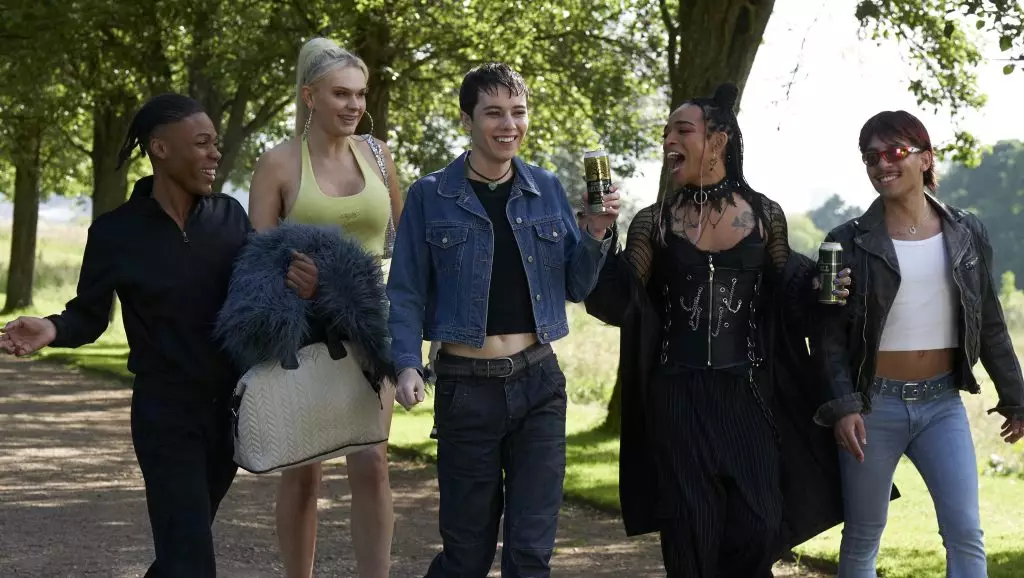The world of television is continuously evolving, and the announcement of the series adaptation of Paris Lees’ poignant memoir, “What It Feels Like For A Girl,” marks a significant milestone in this evolution. Produced by the esteemed Hera Pictures and set to debut on BBC3 and iPlayer, this eight-part series promises to deliver a captivating narrative that resonates with both the struggles and triumphs of a transgender individual navigating a complex world. With its rich storytelling and authentic characters, the adaptation exemplifies how far media has come in portraying diversity and inclusivity.
Captivating Casting Choices
The casting of Ellis Howard as Byron is a choice that seems inspired not only by talent but by an intangible chemistry that speaks to an authentic characterization. Howard, known for his previous work in “Catherine the Great,” embodies the role of a working-class schoolboy transitioning into a trans woman with both fragility and strength. Paris Lees herself noted how the actor’s cheekiness and delicateness capture the nuanced journey of the character. This understanding of the multifaceted nature of transition is essential, and casting someone who can resonate with those experiences is not just a choice, but a statement.
The ensemble cast further enhances the anticipation. Veteran actors such as Laura Haddock and Michael Socha bring gravitas to their roles, while fresh faces like Laquarn Lewis and Hannah Jones lend a contemporary feel that is essential for portraying the vibrant and chaotic underbelly of the noughties club scene. The diverse cast signals a commitment to authenticity—a crucial aspect in creating a narrative that feels genuine and relatable.
The Spirit of the Noughties
Set against the backdrop of early 2000s Britain, “What It Feels Like For A Girl” doesn’t merely recount a personal story; it invites viewers into a specific cultural zeitgeist. The portrayal of Nottingham’s club scene is an exploration of the vibrant, unrestrained spirit of youth—a time characterized by limitless possibilities intertwined with recklessness. As Byron escapes to this lively underworld, the series promises not just parties and hedonism, but also the profound connections formed among “The Fallen Divas,” a gang that symbolizes acceptance in a world often marked by judgment.
The series peels back layers of British culture, revealing both the thrills and perils of a life steeped in nightlife. It deftly juxtaposes carefree indulgence with the harsh realities faced by those living on the fringes of society, highlighting how joy and sorrow coexist in a world that often feels indifferent. With its eclectic characters like Lady Die and Sticky Nikki, the narrative delves into the ways friendships can be both uplifting and tumultuous—the duality experienced by many teenagers seeking their identity.
Transformative Themes and Message
However, it is not all escapism; as highlighted in the synopsis, Byron’s journey is punctuated by a shocking encounter with bad-boy Liam, signaling a shift in the narrative from exuberance to existential introspection. This turning point serves as a potent reminder that transformation often accompanies pain and struggle. The series holds up a mirror to the audience, prompting reflections on identity, acceptance, and the complexities that come with self-realization.
Byron’s experiences resonate beyond the confines of the screen, touching upon universal themes of gender identity, societal acceptance, and the battle for self-definition. As viewers enter Byron’s world, they are invited to challenge preconceived notions about gender and belonging. The authenticity with which these experiences are portrayed is not just a testament to the storytelling but also a poignant call for empathy and understanding in our socially interconnected world.
Creative Forces Behind the Screen
Behind the scenes, the collaboration of established names such as Brian Welsh and Paris Lees herself ensures an authentic narrative voice. Lees’ personal insights will undoubtedly infuse the story with emotional depth, while Welch’s experience in directing high-quality drama promises to deliver visually stunning storytelling. The involvement of a diverse writing team ensures that multiple perspectives are represented, enriching the overall texture of the narrative.
This series stands as a beacon of hope for aspiring storytellers, particularly those from marginalized communities. It emphasizes the potential of media to uplift trans narratives that have historically been overshadowed or misrepresented.
Overall, “What It Feels Like For A Girl” is poised not just to entertain, but to enlighten and inspire, as it skillfully navigates through the tumultuous waters of identity formation and self-acceptance.
